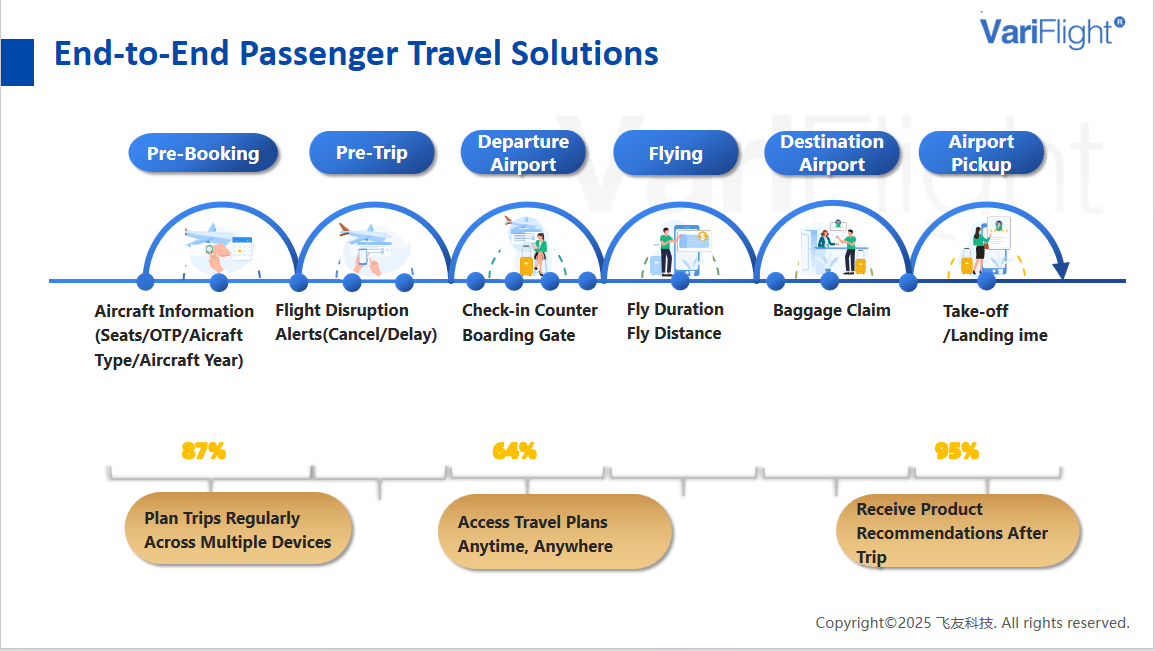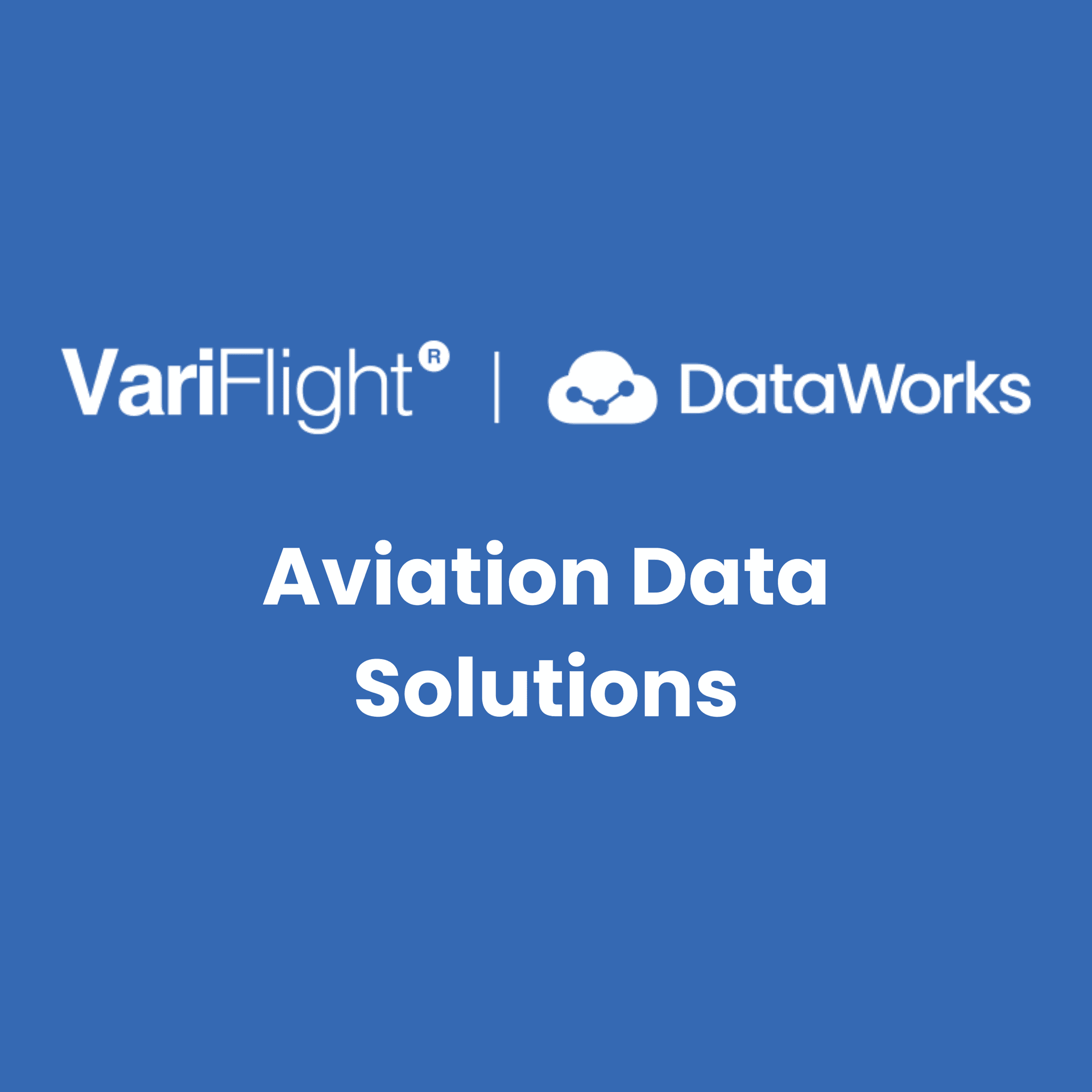Maximizing Ancillary Revenue for OTAs in Airfare Sales: How Data-Powered Products Unlock New Potential
Da
Online Travel Agencies (OTAs) are starting a new phase of growth. Data, new ideas, and the need to earn money in different ways beyond just ticket sales drive this growth.

The key is to use advanced data products. This can greatly increase "ancillary revenue." Ancillary revenue is the extra money made from services like insurance, seat selection, lounge access, and personalized offers.
This guide looks at how OTAs can increase extra revenue during the flight booking process. It focuses on how data-driven solutions change products, marketing, and customer experience.
What Is Ancillary Revenue and Why Does It Matter?
Ancillary revenue sources refer to earnings outside airlines’ or OTAs’ core offerings namely, ticket sales. Instead, it encompasses all value-added services provided to customers along their travel journey. For OTAs, ancillary products and services,the scope is vast:
Baggage upgrades
Paid seat selection
Fast-track security or priority boarding
Travel and delay insurance
Airport transfer services
VIP lounge access (food and beverages)
In-destination experiences
Advertising and data services

Recent market reports show that ancillary revenue is growing. It now makes up over 15% of total airline revenue worldwide in 2022. Leading Chinese OTAs are seeing double-digit revenue growth. This growth is partly because of their expanding range of non-ticket products.
Ancillary Revenue Opportunities: Why Data Is the Game-Changer
Travelers today expect seamless, personalized, and relevant experiences at every turn. This change creates great opportunities for OTAs.
The more they understand customer behavior, the better they can offer tailored products. When they do this in the right context, conversion rates increase. This makes their platforms more appealing to users.
Over the next few years, data-powered platforms will decide which OTAs thrive. The most successful:
Analyze user preferences and real-time travel conditions
Surface timely, scenario-based offers (e.g., “Your flight is delayed, book a lounge now!”)
Predict and solve pain points before they happen
Monetize every stage of travel by connecting the right product at the right moment
Deep Dive: How Data Products Expand Ancillary Revenue
Let’s examine how leading data solutions translate into tangible ancillary revenue scenarios for OTAs.

a) Flight Happiness Index (FHI): Personalized Comfort Upgrades
The FHI evaluates flights using data on seat layout, cabin space, onboard amenities, and historical customer reviews. OTA platforms can integrate FHI rankings into the booking flow, offering:
Personalized flight recommendations (e.g., “This flight ranks highest for comfort in your price range”)
Upselling of premium seats (“Upgrade your seat for extra legroom and 90% comfort rating”)
Targeted marketing: customers who value comfort are more likely to purchase upgrades and related services
Revenue Scenario:OTAs help customers choose flights with the best FHI. This leads to more sales of premium seats. Customers also buy extra amenities like wi-fi and meals. Additionally, they purchase premium insurance.

b) Real-Time Flight Status Updates and Disruption Alerts
Instant access to accurate flight status, delay predictions, and disruption alerts dramatically improves customer trust and engagement. OTAs leveraging these feeds can:
Proactively promote delay/cancellation insurance as soon as disruptions are detected
Cross-sell fast-track security or priority boarding during long wait times
Offer private lounge bookings during airport delays
Soothe frustrated travelers with actionable solutions directly in the app (e.g., transfer assistance)
Revenue scenario: When flights experience delays or cancellations, conversion rates for insurance, lounge access, and alternative transport rise sharply. Direct, data-fueled notifications create immediate upsell opportunities tied to real needs.

c) Airport Transfer, In-Destination Transport, and Amenity Data
Using APIs for airport transfer and local transport options, OTAs can recommend most convenient routes and services, like:
Private car or shuttle service matched with the user’s arrival time and location
Ride-sharing promotions when public transit is disrupted
Rich data on in-flight amenities (wi-fi, meals, entertainment) for upgrade sales
Weather data and transfer status to recommend contingency services (e.g., hotel bookings if arrivals are delayed overnight)
Revenue scenario: Travelers value timely, context-aware ground transportation options. These integrated recommendations increase commission and markup opportunities on third-party services.
d) Historical Flight Data Analyzing & Performance Indices
OTAs can harness historical on-time performance metrics and delay indices:
Advise travelers on best times/routes to avoid disruptions (“This route historically has 20% fewer delays”)
Segment insurance promotions by risk factors, increasing conversion in high-risk scenarios
Build trust by transparently sharing reliability data, reducing booking abandonment
Revenue scenario: Travelers with access to reliability data are more likely to purchase additional service guarantees, protection products, and premium offers.

e) Custom In-Flight and Airport Services Bundling
By integrating real-time and historical data, OTAs can offer bundled ancillary products based on highly specific customer segments:
Business travelers: fast-track, lounge access, premium airport pickups
Leisure travelers: meal upgrades, sightseeing packages, family-friendly extras
Data-driven segmentation helps promote the right extra products at every stage. This includes all parts of the customer journey. It starts with booking and pre-flight preparations. It continues to the day of travel and post-arrival services.
Revenue scenario: Intelligent bundling increases average transaction value per customer, unlocking new profit centers and strengthening brand loyalty.
Implementation: Bringing Data Products to Life
Translating data products into meaningful revenue growth requires careful execution. Key strategies include:
a) High-Touchpoint Placement:Display ancillary options in prime positions — checkout page, order confirmation, itinerary views, in-app notifications — always in response to real user scenarios.
b) Scenario-Based, Real-Time Offers:“Your flight is delayed, book a lounge now.” “Weather at your destination is stormy — consider travel insurance.” By framing upsells as helpful advice, OTAs maximize conversion and build trust.
c) AI & Big Data Personalization:Segment users by historical behavior, preferences, and trip context; deliver custom product recommendations, improving retention and repeat purchases.
d) API Integration:Use tools like DataWorks to simplify onboarding.You can gather flight status, disruption alerts, lounge inventory, transfer schedules, and weather updates. APIs ensure data is timely, accurate, and actionable for millions of users.
e) Educate and Enhance Transparency:Show why a product is recommended (“Your selected airline has a low on-time rate — consider delay insurance”). Data-backed education increases perceived value and willingness to purchase.
Expanding Data Product Coverage: Dataworks in Practice
Products such as Dataworks offer OTAs unparalleled flexibility and intelligence in increasing ancillary earnings.

Flight Happiness Index (FHI): Personalized ratings enhance seat upsell and loyalty program engagement.Target meal upgrades, wi-fi bundles, and comfort-related purchasables.
Real-time flight status/alerts: Immediate disruption notifications boost sales of time-sensitive products.
Flight transfer and connection APIs: Improve traveler convenience, upsell airport transportation and connection assistance.
Analyze historical flight data: Use this information to improve insurance products. Build customer trust with clear reliability insights. Provide travel recommendations based on data.
Airport Delay Index: shows how often flights experience delays, and on-time performance data helps travelers. Use this information to plan better travel routes. This can also support focused and relevant promotional campaigns.
Airport weather API: Trigger timely offers for lounges, transfers, or alternate arrangements.
14 days free data trial: Here
API-first integration: Shortens time-to-market for new ancillary offers.These tools allow OTAs to present context-rich, scenario-specific products faster and more reliably — all while supporting segmentation, personalization, and revenue analytics. With scalable APIs, platforms can seamlessly integrate and continually innovate their product mix.
Measuring Success: Analytics & Optimization
Robust analytics are critical for evaluating ancillary revenue strategies:
Track conversion rates by upsell scenario, channel, and customer segment.
A/B test new product placements and data-powered recommendations.
Analyze retention rates, repeat purchase frequency, and downstream impact on core ticket sales.

Feedback loops help improve products. You can refine items that engage users over time. You can change or replace low-performing offers. Detailed, data-based insights drive this process.
Conclusion
In today’s competitive travel market, OTAs can grow sustainably by increasing extra revenue through advanced data products. By understanding travelers well and providing real-time solutions, OTAs can increase revenue. Using platforms like Dataworks helps them improve user satisfaction and build lasting loyalty.
Using advanced data feeds and analytics during the booking process turns each interaction into a chance to earn money. This makes extra revenue a key part of the modern OTA business model, not just an addition.
DataWorks: Aviation Data Solutions For Your Industry Challenges, Powered by VariFlight.
Reference:
Online Travel Agencies Market Share Across the World
China Online Travel Market Size & Share Research Report - 2030
Trip.com Group Ltd (TCOM) Q4 2024 Earnings Call Highlights
Tongcheng Travel Posts Continued Growth and Increased Profitability in 2024 Q3
Airline ancillary revenue hit $69B in 2022, beating 2019 levels
2024 China Tourism Facts & Figures: Inbound and Outbound
China's Outbound Tourism Industry Development Report 2024
Airline Ancillary Revenue Skyrockets to $148.4 Billion Worldwide for 2024
